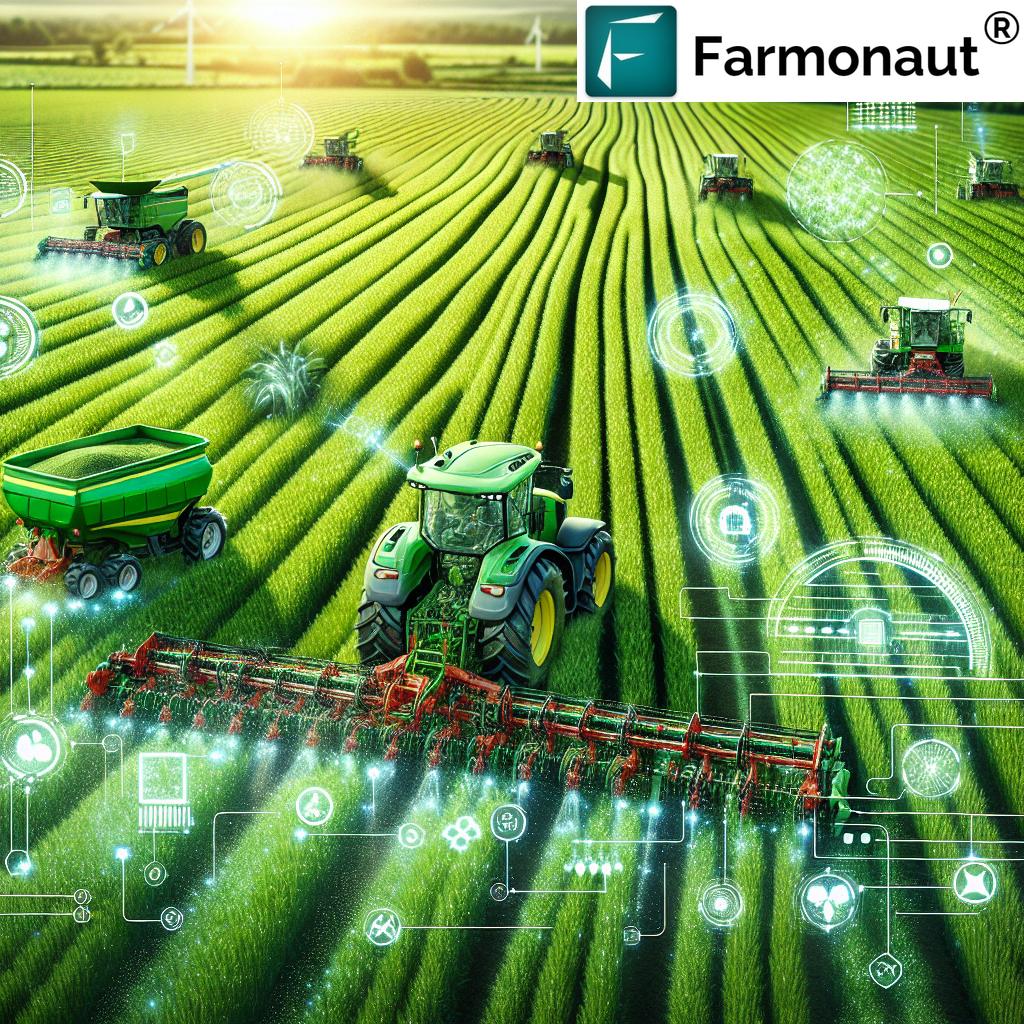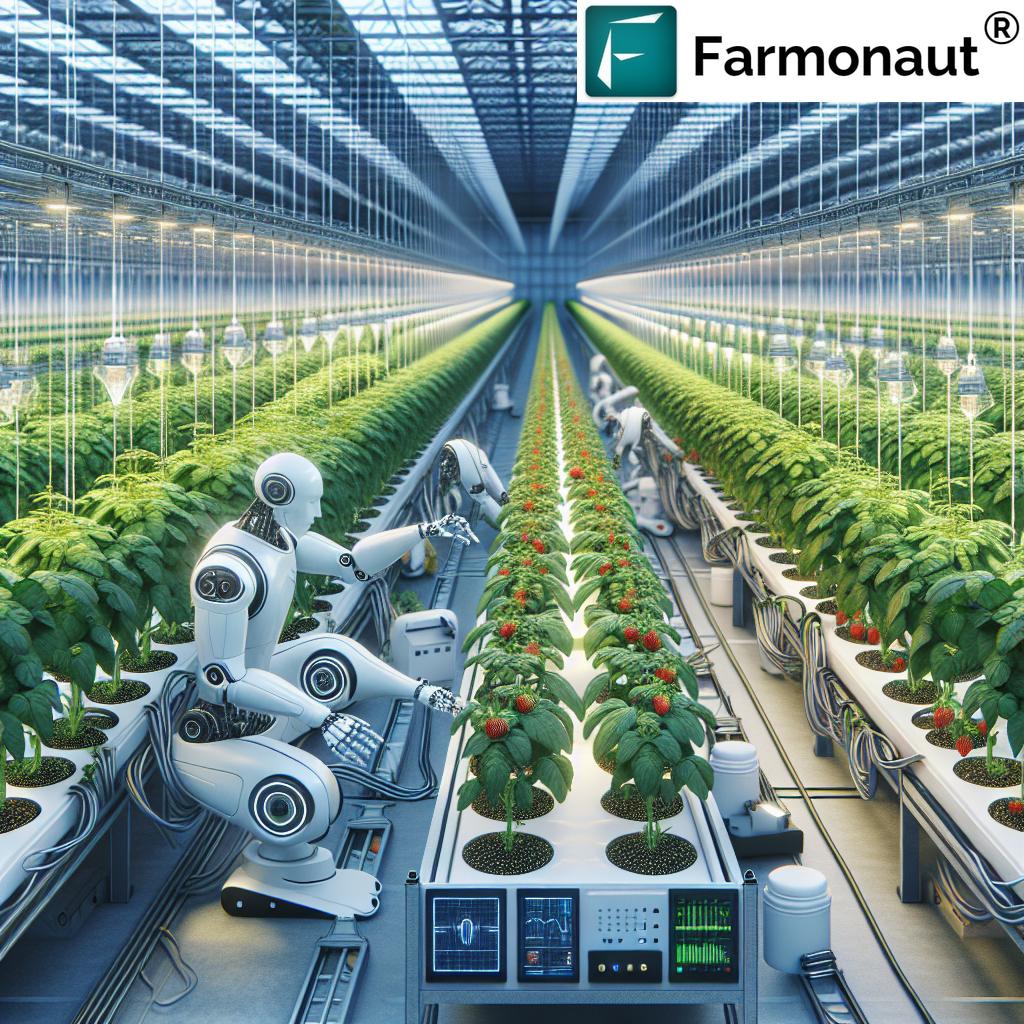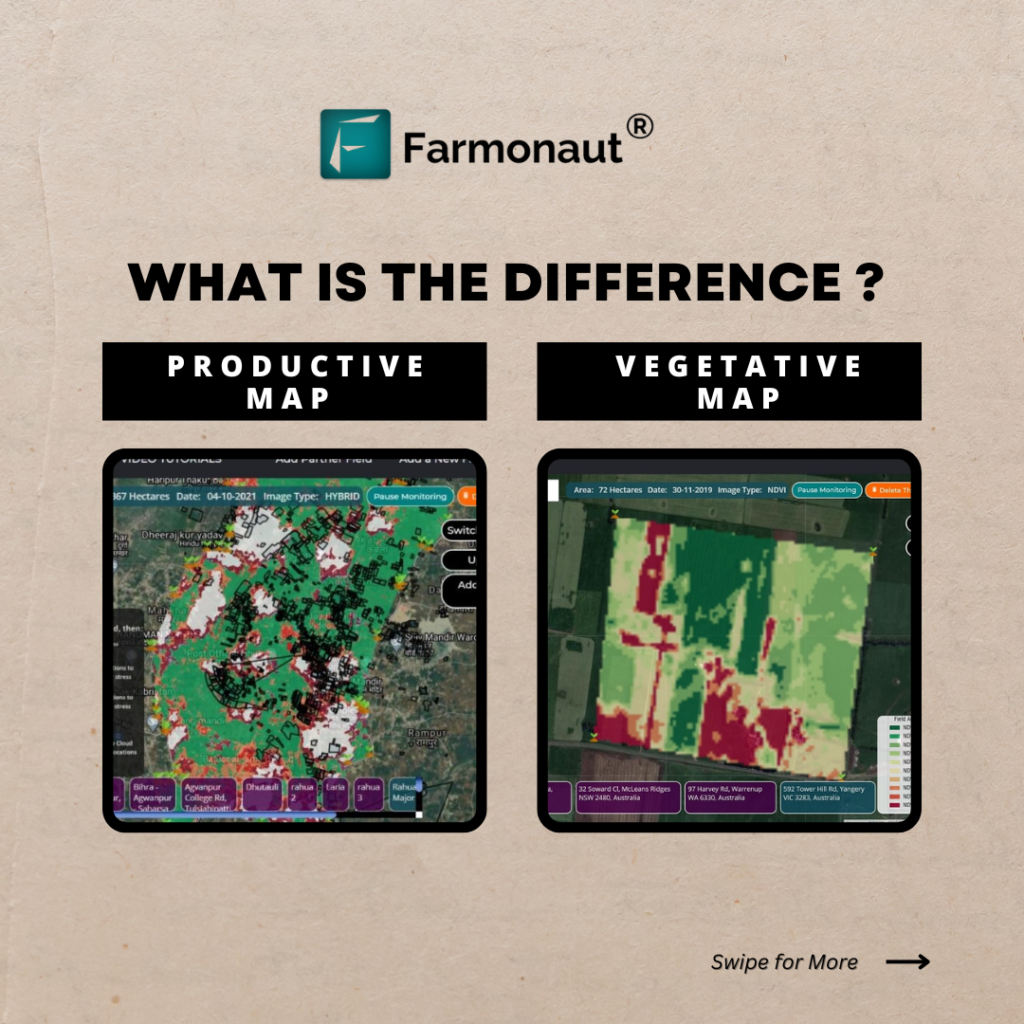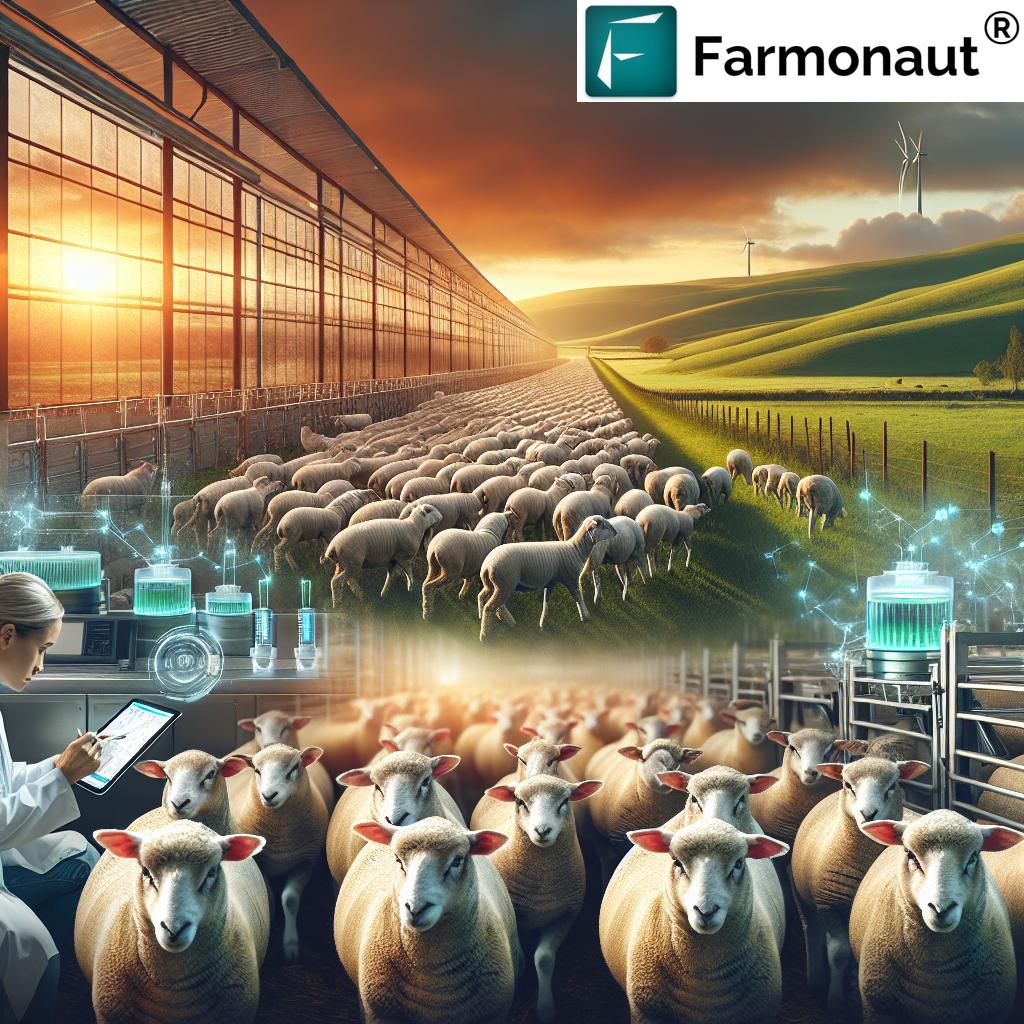Farm Technology Secrets: 7 Innovations Changing Farming
“Precision agriculture can increase crop yields by up to 20% using data-driven insights and targeted resource application.”
As we stand at the crossroads of population growth, climate change, and finite natural resources, technology has become the beating heart of modern agriculture. Innovative farm technologies such as precision agriculture, autonomous farm machinery, and farm IoT solutions are breaking barriers, driving new efficiencies, and transforming how farmers across the globe cultivate crops, manage farms, and address environmental concerns. In this exhaustive guide, we’ll unlock the secrets behind the top seven agricultural technology advancements revolutionizing our fields, forests, and food systems.
Whether you’re a forward-thinking farmer, agri-entrepreneur, policymaker, or agricultural technology enthusiast, this article presents you with a deep dive and actionable insights into concepts shaping the future – from robotics in agriculture, controlled environment agriculture, and precision tools to powerful platforms like Farmonaut, which makes precision agriculture accessible, affordable, and impactful for every farm.
Table of Contents
- Precision Agriculture: The Power of Data-Driven Farming
- Autonomous Farm Machinery: A New Era of Efficiency
- Robotics & Artificial Intelligence: Smarter Farming, Lower Labor
- Controlled Environment Agriculture: Next-Level Crop Security
- IoT in Farming: The Rise of Connected Agriculture
- Farmonaut: Affordable, Satellite-Powered Precision Agriculture
- Comparison Table: 7 Farm Technology Innovations
- The Sustainable Impact: Benefits Beyond the Field
- Farmonaut Plans & Subscriptions
- FAQ: Farm Technology & Farmonaut Explained
- Conclusion
“Autonomous farm machinery reduces labor costs by as much as 30%, transforming large-scale agricultural operations worldwide.”
Precision Agriculture: The Power of Data-Driven Farming
Precision agriculture, often called site-specific farming, is a game-changer in efficient, sustainable crop production. By utilizing GPS, GNSS technologies, sensors, and satellite imagery, we can map fields to a level of accuracy that was once unimaginable. These tools allow us to monitor crop health in real-time, precisely apply inputs, and optimize resource use, ensuring every drop of water, every granule of fertilizer, and every seed is utilized using actual field data rather than guesswork.
How GPS Farming Equipment & Crop Monitoring Systems Boost Productivity
- GPS farming equipment guides tractors, harvesters, and sprayers with centimeter-level accuracy, eliminating overlaps, skips, and input wastage.
- Variable rate application farming (VRA) enables us to apply seeds, fertilizers, and pesticides at varying rates, finely tuned to the specific needs of each field zone, reducing input costs and boosting yields.
- Crop monitoring systems using drones or satellites provide early warnings about plant health and soil moisture, helping us intervene before issues become costly.
Did you know? Precision agriculture can reduce fertilizer costs by up to 15% and cut pesticide use by 50% in some cases, all while increasing crop yields.
For those seeking to implement precision agriculture without hefty hardware investments, Farmonaut offers a satellite-powered approach. Its mobile and web platforms deliver real-time crop health monitoring and AI-powered advisory, making smart, GPS-powered farm management accessible to farms large and small.
Benefits of Precision Agriculture
- Increase in productivity through optimized input use
- Significant reduction in environmental impacts (less runoff, lower emissions)
- Lower operational costs due to targeted resource use
- Better adaptation to changing weather and soil conditions
- Proven technologies in regions like India, North America, and Western Europe
Autonomous Farm Machinery: A New Era of Efficiency
Autonomous farm machinery and self-driving tractors from companies like John Deere, Case IH, and AGCO have moved from laboratory demos to bustling fields worldwide. By leveraging artificial intelligence, sensors, and satellite-positioning systems, these machines can plow, plant, and harvest without direct human intervention.
How Do Autonomous Machines Work in Agriculture?
- Self-driving tractors and harvesters use GPS, GNSS, and AI to follow field maps, adjusting movements in real time.
- Autonomous machines handle repetitive tasks, reducing labor shortages in peak seasons.
- Fleet management solutions help optimize machinery utilization, reducing downtime and operational costs.
- These machines operate 24/7 with maximum efficiency, regardless of operator fatigue or labor availability.
For large-scale agricultural operations, autonomous farm machinery can reduce labor costs by as much as 30%, while increasing yields due to their unwavering precision.
Key Benefits of Autonomous Farm Machinery
- Tackles labor shortages: Addressing an acute pain point globally.
- Consistency & efficiency: Machines do not tire, ensuring consistent quality and reducing waste.
- Environmental impact: By applying inputs accurately, emissions and runoff are minimized.
Want to manage your fleet of tractors and harvesters smarter? Farmonaut’s Fleet Management module enables large and small agribusinesses to monitor, optimize use, and streamline scheduling — all via the web or mobile app.
Robotics & Artificial Intelligence: Smarter Farming, Lower Labor
Robotics in agriculture is redefining what’s possible. Autonomous robots powered by sophisticated algorithms can now navigate fields, identify crops at the perfect ripeness, and harvest them with delicate precision. From weeding robots that minimize herbicide use to harvesters that sort strawberries, apples, and tomatoes autonomously, AI and robotics are reducing labor needs and tackling inefficiencies.
How Do Robotic Systems Transform Agriculture?
- Robot weeders accurately differentiate between crops and weeds, reducing or even eliminating pesticide use.
- Robotic harvesters work in greenhouses and open fields, picking only ripe produce, minimizing waste.
- AI-powered drones perform crop monitoring and disease detection, alerting us when action is needed.
By combining robotics with data from farm IoT solutions, we can operate even more efficiently, with dramatic reductions in both costs and environmental impact.
Want real-time crop health and advisory from space? Farmonaut’s platform marries satellite-based crop health monitoring with AI-powered insights, delivering precise, actionable updates to help maximize yields and minimize risks.
Where Are Robotics Used in Modern Farming?
- Robotic harvesters in strawberry, apple, and tomato fields.
- Automated greenhouse systems managing planting, watering, and environmental controls.
- Drones for aerial crop scouting in broad, remote, or inaccessible fields.
Controlled Environment Agriculture (CEA): Next-Level Crop Security
Controlled environment agriculture (CEA) introduces a new standard in food security, safety, and year-round production. By cultivating crops inside greenhouses, advanced indoor facilities, or even vertical farms, we sidestep the risks of uncertain weather, pests, and resource fluctuations.
How Does CEA Work?
- CEA systems carefully manage light, temperature, humidity, CO2 levels, and nutrients — creating the perfect microclimate for every crop.
- Indoor cultivation enables year-round production, crucial for food security and supply chain resilience.
- Water use is tightly regulated, often using hydroponics or aeroponics, slashing water use by up to 90%.
- CEA methods remove or minimize contamination risks, improving food safety.
The Power of Data in CEA
- Crop management platforms provide real-time insights for maximizing crop health and yield in controlled environments.
- Farmonaut empowers users to optimize growing conditions, ensuring optimal resource use in CEA operations.
What are the Sustainability Benefits of CEA?
- Substantial water savings (80-95%) vs. traditional irrigation
- Higher yields per square meter
- Reduced carbon emissions by producing food closer to demand centers
- Lower contamination risk than open-field farming
Explore large-scale, digitally managed CEA projects for uninterrupted food supply? Learn about Farmonaut’s Agro Admin App, designed for plantation, crop, and forest management at scale.
Farm IoT Solutions: The Rise of Connected Agriculture
The Internet of Things (IoT) has woven a digital nervous system throughout modern farms, enabling real-time monitoring, automation, and unprecedented data-driven decision making.
How IoT Works in Agriculture
- Soil sensors provide continuous feedback on moisture, nutrient, and pH levels, triggering smart irrigation systems only when and where water is needed.
- Machinery sensors monitor equipment health, predicting failures and scheduling maintenance proactively.
- Livestock wearables track animal health, location, and reproductive status.
- Collected data is relayed to cloud-centric dashboards (like Farmonaut’s platform), where advanced algorithms turn information into action.
With farm IoT solutions, the benefits are immense: Lower water costs, more resilient operations during extreme weather, and a detailed, auditable record for sustainability reporting.
Smart Irrigation Systems: Water Management Reimagined
- Automated smart irrigation adapts watering schedules according to soil, crop needs, weather forecasts, and field-level data to reduce waste.
- Farmonaut’s satellite-based crop monitoring supports precise irrigation plans from space – a compelling option for scale and affordability.
How do you make all these systems work together? Through open APIs! Developers can integrate Farmonaut’s satellite and weather data directly into machinery, dashboards, or proprietary IoT systems. Learn more at: Farmonaut API & API Docs.
Farmonaut: Affordable, Satellite-Powered Precision Agriculture for All
While many agricultural technology advancements depend on costly hardware or regional expertise, Farmonaut democratizes next-generation farm management with a platform that brings precision, traceability, and sustainability within reach.
Farmonaut Technologies:
- Satellite-Based Crop Health Monitoring: Using multispectral imagery, Farmonaut analyzes crop and soil conditions, empowering us with actionable data for every field.
- Jeevn AI Advisory System: This intelligent advisor recommends optimal actions based on real-time crop, soil, and weather data.
- Blockchain-Based Product Traceability: Securely tracks food ‘from seed to shelf’, preventing fraud, boosting transparency, and building consumer trust (Traceability Solutions).
- Fleet & Resource Management: Gain control over all machinery, vehicles, and logistics to optimize costs and environmental impact (Fleet Module).
- Carbon Footprinting: Real-time monitoring of emissions allows businesses to track, control, and document their sustainability journey (Carbon Solutions).
Why Choose Farmonaut?
- Accessible through Android, iOS, browser, and API
- Subscription pricing—scaled for smallholders, cooperatives, agribusinesses, and governments
- API for seamless integration into existing agricultural or IoT systems
- Affordable alternative to hardware-intensive systems
For comprehensive, affordable crop area estimation, forest management, and advisory, access the full spectrum of Farmonaut’s offerings at our Crop Plantation, Forest & Advisory Portal.
Comparison Table: 7 Farm Technology Innovations
| Name of Innovation | Estimated Year of Widespread Adoption | Core Functionality | Estimated Impact on Yield (% Increase) | Reduction in Labor (%) | Sustainability Benefits |
|---|---|---|---|---|---|
| Precision Agriculture | 2015–2025 | Data-driven crop monitoring, GPS mapping, variable rate input application | 10–20% | 5–10% | 15–30% water savings, reduced fertilizer and pesticide runoff |
| Autonomous Farm Machinery | 2020–2030 | Self-driving tractors, harvesters; automated planting/plowing/harvesting | 10–15% | 20–30% | 30% lower fuel/emissions, minimal soil compaction |
| Robotics in Agriculture | 2022–2030 | Harvest/weeding robots, drone-based data collection | 5–10% | 15–20% | Reduced chemical usage, efficient land use |
| Controlled Environment Agriculture (CEA) | 2018–2030 | Indoor/greenhouse growing, automated climate/nutrient control | 15–30% | 20–35% | Up to 90% water savings, year-round supply, reduced transport emissions |
| Farm IoT Solutions | 2017–2025 | Connected sensors for soil, weather, livestock, machinery | 7–15% | 8–12% | Water conservation (10–40%), optimized energy use |
| AI-based Advisory Systems | 2021–2028 | Predictive models, crop health alerts, tailored recommendations | 8–18% | 8–15% | Lower input waste, better risk management |
| Blockchain-Based Traceability | 2021–2028 | Transparent, secure food supply chains, fraud reduction | — | — | Reduces food waste, increases consumer trust, enhances food safety |
The Sustainable Impact: Benefits Beyond the Field
Each step forward in farm technology delivers tangible and intangible returns for people, profits, and the planet:
- Increased Productivity: Smarter input use means bigger yields from the same land area, vital for feeding the world without expanding farmland.
- Resource Conservation: Smart irrigation systems and VRA curtail waste of water, power, and nutrients.
- Reduced Environmental Impact: Emissions, runoff, and soil degradation are all tackled by data-driven, targeted management.
- Improved Food Security & Safety: Blockchain-based traceability secures supply chains and increases consumer trust in origin, safety, and quality.
- Lower Labor Costs: Automation, robotics, and AI relieve the stress of labor shortages—freeing farm teams for higher-value tasks.
- Economic Resilience: Making operations efficient and adaptable helps farms withstand price swings, weather events, and market shocks.
To explore climate-smart agriculture and proactively measure/mitigate your environmental impact, learn more about Farmonaut Carbon Footprinting.
For banks/insurance firms streamlining claims and loans, Farmonaut’s crop loan & agri-insurance verification is a secure, data-driven choice.
And for leaders managing huge farms, government programs and cooperatives: Visit our Agro Admin App for efficient, scalable management of fields, crews, and crops across vast geographies.
Farmonaut Plans & Subscriptions
Ready to transform your farm with affordable, satellite-based crop health monitoring, AI advisory, and sustainability tools? Farmonaut offers flexible subscriptions for individuals, cooperatives, agribusiness, and institutional clients – no hardware investment required.
FAQ: Farm Technology & Farmonaut Explained
What is the role of GPS and GNSS in modern farming?
GPS and GNSS technology enable us to create highly accurate field maps, improve the guidance of tractors and harvesters, and underpin variable rate application farming. This ensures we can apply resources only where they’re needed, minimizing waste and lowering costs.
How does Farmonaut differ from traditional precision agriculture hardware vendors?
Farmonaut makes precision agriculture affordable and accessible by leveraging satellite imagery and AI instead of expensive, on-field sensors/hardware. Insights on crop health, soil moisture, and weather are delivered via app or web—making it cost-effective for all levels of agriculture.
Who can benefit from Farmonaut’s solutions?
Our platform is used by individual farmers, agribusinesses, NGOs, government bodies, financial institutions, and corporates requiring scalable farm management, traceability, or sustainability tools.
What is Variable Rate Application (VRA) and how does it work?
Variable Rate Application (VRA) refers to the ability to apply inputs (seeds, fertilizers, pesticides) at precisely varying rates across a field, as dictated by soil health, crop stage, or satellite data. This reduces input waste and can lead to higher yields.
Are Farmonaut’s technologies mobile-friendly?
Yes—access is available on Android, iOS, browser, and via API for developers or integration into existing farm IoT solutions.
Does Farmonaut offer carbon footprint monitoring?
Absolutely. Our carbon footprinting module helps you track, report, and manage emissions across every farm or agribusiness operation.
What types of crops or geographies are supported?
We support a vast range of crops (cereals, oilseeds, vegetables, orchards, and more) across diverse geographies, including India, Africa, Egypt, Europe, and the Americas—wherever satellite imaging is available.
How secure is the data on Farmonaut’s platform?
All data is encrypted, with secure blockchain options for supply chain verification and traceability, particularly valued by food companies and exporters.
Conclusion
Farm technology isn’t just about machines or satellites—it’s a revolution in how we think, plan, and nurture agricultural and forestry landscapes. From improving productivity and sustainability with technologies like precision agriculture, autonomous machinery, robotics, and IoT solutions, to ensuring robust data-driven decision-making and resource management, our collective future depends on embracing these advancements.
With accessible, affordable options like Farmonaut, even small farms can harness the power of data, satellite intelligence, and scalable precision tools—turning every field into a model of efficiency and sustainability. By investing in these innovations, we are not only preparing to meet the world’s future food needs but also safeguarding the environment for generations to come.













